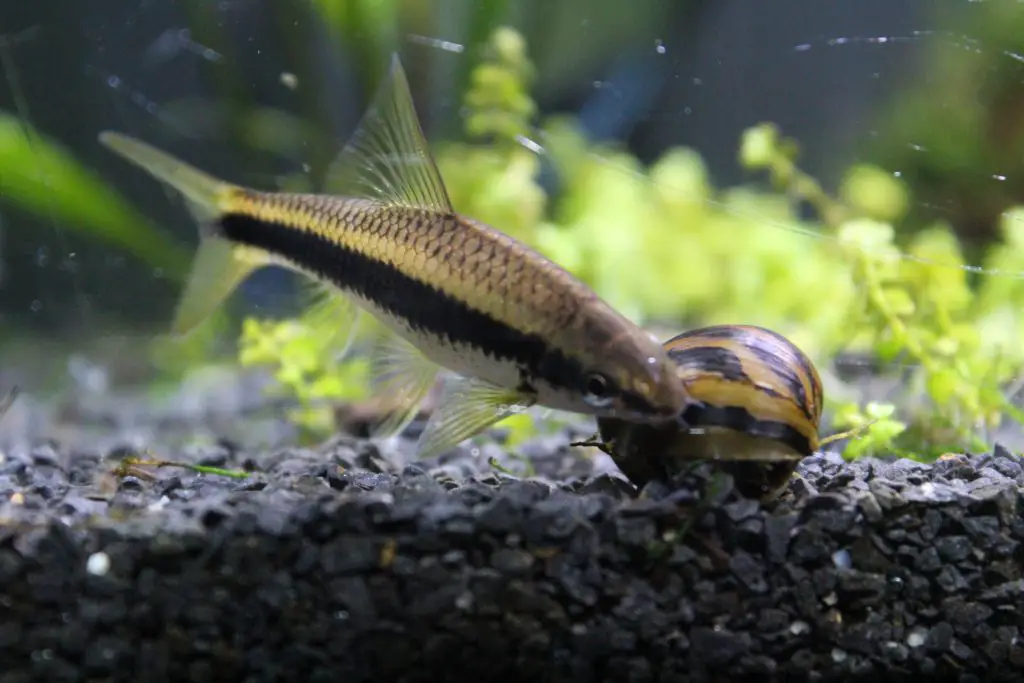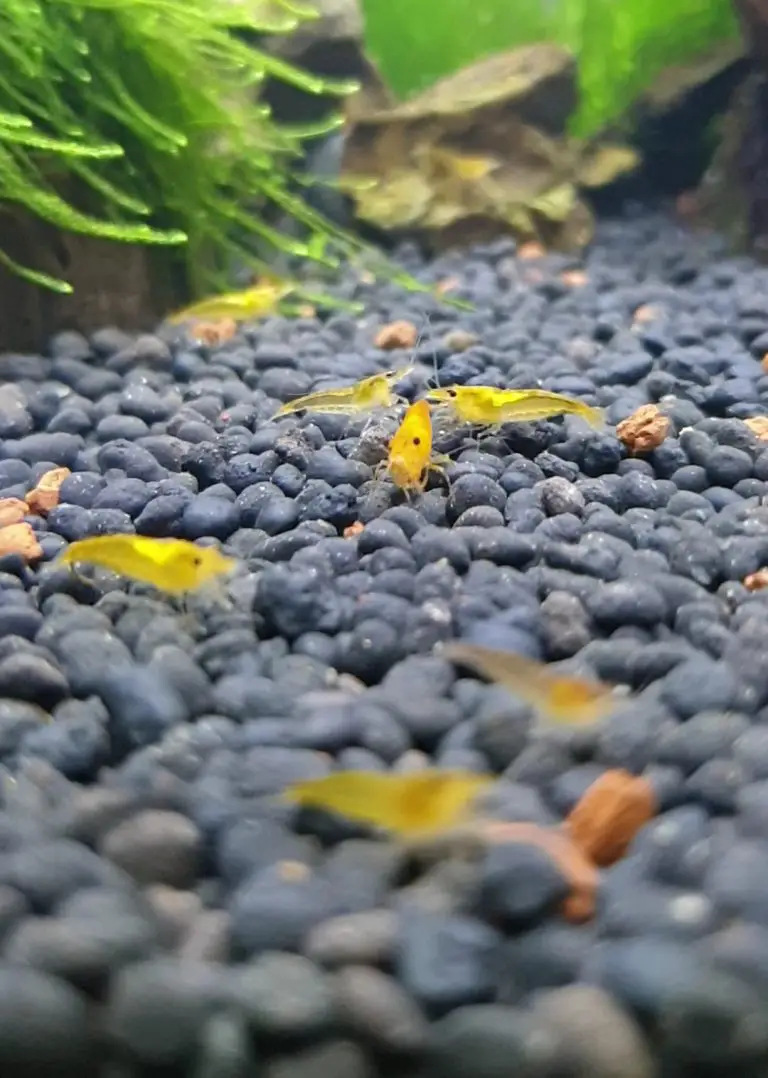These Are The Best Algae Eaters For Your Aquarium (Planted Or Unplanted)
One of the most common problems that are relatable to any aquascaper or fish keeper is the algae growth problem. While performing maintenance there are always steps that we could follow to remove them like scraping them off the glass or scrubbing them off the driftwood. These are additional steps that could be eliminated or at the least, reduced if you have a balanced ecosystem.
To increase the efficiency of removing algae within your tank there is some particular kind of fish and crawlers that we could add to our aquariums that could be perfect for eating the algae typically found in our freshwater aquarium. Some of the best Algae eaters are Amano Shrimp, Siamese Algae Eater, Dwarf Suckers (Otocinclus), Nerite Snails, and Bristlenose Plecos.
Amano shrimp (Caridina multidentata)
These guys are perfect to clean any kind of hair algae within our aquarium these are the best algae eaters known in the freshwater community. They are able to clear any kind of string or hair algae. Even the most commonly found green hair algae. But however, some of them even come to claim that it is able to eat off Blackbeard algae. Therefore, making them the best perfect addition to the planted tanks.
Amano Shrimps are considerably larger than the other cherry shrimps. They can grow up to the size of two-inch. They are super friendly with any other tank mates. But however, avoid putting them away along with any aggressive fish or cichlids which will put their life at risk.

I would suggest any new stream keeper or aquascaper to Adam on shrimp into their aquariums as they are less sensitive compared to any other freshwater shrimps. Make sure there are a lot of hiding spaces for the shrimps available for them during moulting.
Siamese algae eater (Crossocheilus oblongus)
These guys are pretty active and you can see them roaming around and grazing around algae all over your aquarium. They are wonderful at clearing algae from your hardscape, driftwood, and glass. They are even wonderful at clearing overgrown hair algae or string Algae.

But make sure that you buy them when they are at a very quiet young size as they grow up to 6 inches. You can just buy maybe one or two of these as they tend to grow bigger in size in the mere future.
Siamese algae eaters are very peaceful fish but they tend to chase other small fish around the tank. They are omnivorous and they do not solely depend upon all given for their primary source of food so make sure that you keep feeding them from time to time.
Dwarf Suckers (Otocinclus)
If you have a Nano tank and you’re looking for a Nano fish then this fish should be both fit for you. These guys are always seen sucking onto some hardscape or driftwood or simply the glass. They grow only up to two inches but they are able to clear off any kind of soft Algae or a brown diatom. They will help you clear any extra algae on the leaves rocks or decorations in the aquarium.
Make sure you buy them in a school of at least six fish, as they feel more comfortable when they are in a school of fish. These guys are pretty peaceful with other tank mates due to their small size and vulnerability towards aggressive fish.

Since they are very calm and peaceful they wouldn’t be fighting for food with any other tank mates so make sure that you add enough food like pellets or wafers just to ensure that they don’t starve.
Make sure that there are no major water parameter fluctuations in the tank as Otocinclus are a sensitive variety of fish.
Nerite snail
These guys are known as the best alligators in the game, they are basically algae-eating machines. They can clear off any kind of soft type algae like diatom, and also get rid of any kind of green spot algae. These guys are easy to care for and can be considered as a strong recommendation for beginner fish keepers or aquascaper. These snails are harmless to any other tank mates.
They come in various patterns and colours, the most common being the colour form of zebra and tiger. They grow only Max up to 1 inch, they prefer hard water how long with some calcium that would help them keep their shells strong and firm and healthy. They love to grace upon various materials so make sure that you have a lot of aquatic plants in your aquarium when you add these snails.

Another cool fact about these guys is that they would not be able to breed in freshwater, they can only lay eggs but they wouldn’t hatch so you don’t have to worry about snail infestation in your tank. You can simply scrape off these eggs from the hardscape or plants or wherever they lay eggs.
Bristlenose Plecos
These guys are also known as the bushy nose Pleco. These guys are pretty much in handy when it comes to owning a Pleco but you do not have a large tank. They will not grow more than five to six inches while most common Plecos grow over 1 foot. Therefore these guys are perfect for any Nano tank aquarium. You will also find a huge variety of Plecos you can select from but however, but the most common and well-known Plecos in this hobby involve Bistlenose, Albino Bristlenose, etc.
These guys are well known to be able to clear off any kind of soft algae or diatom. They might be able to clear off soft all gays but they’re not able to clear off any kind of tough algae, like hair algae or green algae. These guys are found mostly on the driftwood or any kind of hardscape.
Have you ever added a new piece of driftwood into your tank, and observed some kind of fuzzy-looking bacteria growing on it, these Plecos will definitely be the perfect choice to clear off this bacterial fungus.
Another important fact that you need to know is, that once they grow to a matured size, make sure this pleco is kept in a bigger tank of at least 15 to 20 gallons. They might be peaceful with other tank minutes. Still, then they are definitely not considered to be peaceful when it comes to their own species so it is highly discouraged to keep more than one matured Pleco in the same tank unless, of course, it’s for breeding purposes.
These black holes are found in the rivers and tend to enjoy a strong flow of water so make sure that you have a heavy flow philtre or canister that gushes out high-pressure water and since they love squeezing into small spaces and areas it is recommended that you add in some black oak caves or coconut shells to create a cave-like structure.
Once again it needs to be understood that these Plecos do not completely depend upon algae for their food, so make sure you add enough food for all these alligators which might include zucchini, green beans, carrot, Or cucumber.
Driftwood is highly essential for these Plecos as it does not only provide them with an area to hide but at the same time, they are able to eat the wood as well which will basically help them better digest.






